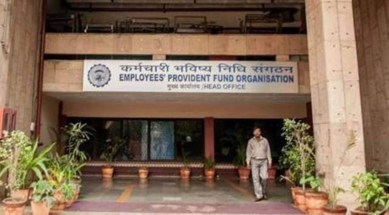Employees get time until July 11 to opt for higher pension option
The deadline to apply for higher pensions under the Employees’ Pension Scheme (EPS) was to end on June 26. So far, 16.06 lakh applications are estimated to have been received, an EPFO statement said.

The Employees’ Provident Fund Organisation (EPFO) has extended the deadline to apply for higher pensions till July 11, the second such extension in two months. This time, employers are getting additional three months till September 30, and employees 15 more days till July 11.
The deadline to apply for higher pensions under the Employees’ Pension Scheme (EPS) was to end on June 26. So far, 16.06 lakh applications are estimated to have been received, an EPFO statement said.
monthly limit of free stories.
with an Express account.
Applicants have been facing recurring issues, with many raising concerns about the lack of clarity on the amount to be deposited to avail the higher pension. Some have faced difficulties in processing applications. The earlier deadline was May 3.
“Last opportunity of 15 days is being given to remove any difficulty faced by the eligible pensioners/ members. Accordingly, the last date for submission of applications for validation of option/ joint options by employees is extended to 11.07.2023,” the statement said.
“…many representations have been received from Employers & Employers’ Associations wherein requests have been made to extend the time period for uploading wage details of applicant pensioners / members. The request has been considered sympathetically and the employers are being given a further period of three months to submit wage details etc. online latest by 30.09.2023,” it said.
The statement further said any eligible pensioner or member who faces any issue in updating KYC in submitting an online application for validation of joint option can lodge such grievance on EPFiGMS for resolution. EPFiGMS is a customised portal of the EPFO for handling grievances.
Some of the applicants are struggling with the joint option validation, which is to be done by employers along with employees. Many employers have cited difficulties in tracing past historical data for employees’ salaries. As many as 30 employers are learnt to have not agreed to validate the joint option.
“On the responsibility of the Employers to provide joint verification, the (employees’ EPFO pension) records pertain to previous years which are at least 8 years old. A lot of verification needs to be done as these are involving financial transactions… they should also consider putting in place an alternative mechanism for those enterprises that have wound up their businesses now after the pandemic and economic situation. Cases where employers were not found, for the retired pensioners living in different locations should also get addressed,” KE Raghunathan, member representing employers, Central Board of Trustees, EPFO said.
On the amount to be deposited, issues arise especially for those who may have withdrawn some amounts from their PF account in the past few years and thus may not have adequate balance to opt for higher pension. Another concern is that in the absence of an estimate of the required amount for the pension, a subscriber may have opted for the higher pension but since the pension scheme per se does not allow exit, they may face difficulties in opting out if they don’t want to continue.
For this legal bottleneck, subscribers are expected to be given a three-month window to pay the dues once the higher pension scheme becomes operational, failing which they will be considered ineligible. Also, the subscribers have been given a calculator on the online portal by which they can estimate their dues approximately.
The Employees’ Provident Funds and Miscellaneous Provisions Act, 1952 did not provide for a pension scheme. The EPS, administered by the EPFO, came into being in 1995. The pension fund was to comprise a deposit of 8.33 per cent of the employers’ contribution towards the PF corpus. Both employees and employers contribute 12 per cent of the employee’s basic salary, dearness allowance and retaining allowance, if any, to the EPF. The employee’s entire contribution goes to EPF, while the 12 per cent contribution by the employer is split as 3.67 per cent to EPF and 8.33 per cent to EPS. The Government of India contributes 1.16 per cent for an employee’s pension for those below the wage threshold. Employees do not contribute to the pension scheme.
In a ruling on November 4 last year, the Supreme Court had upheld the amendments to the Employees’ Pension (Amendment) Scheme, 2014, providing another chance for employees who were existing EPS members as on September 1, 2014 to contribute up to 8.33 per cent of their ‘actual’ salaries — as against 8.33 per cent of the pensionable salary capped at Rs 15,000 a month — towards pension.